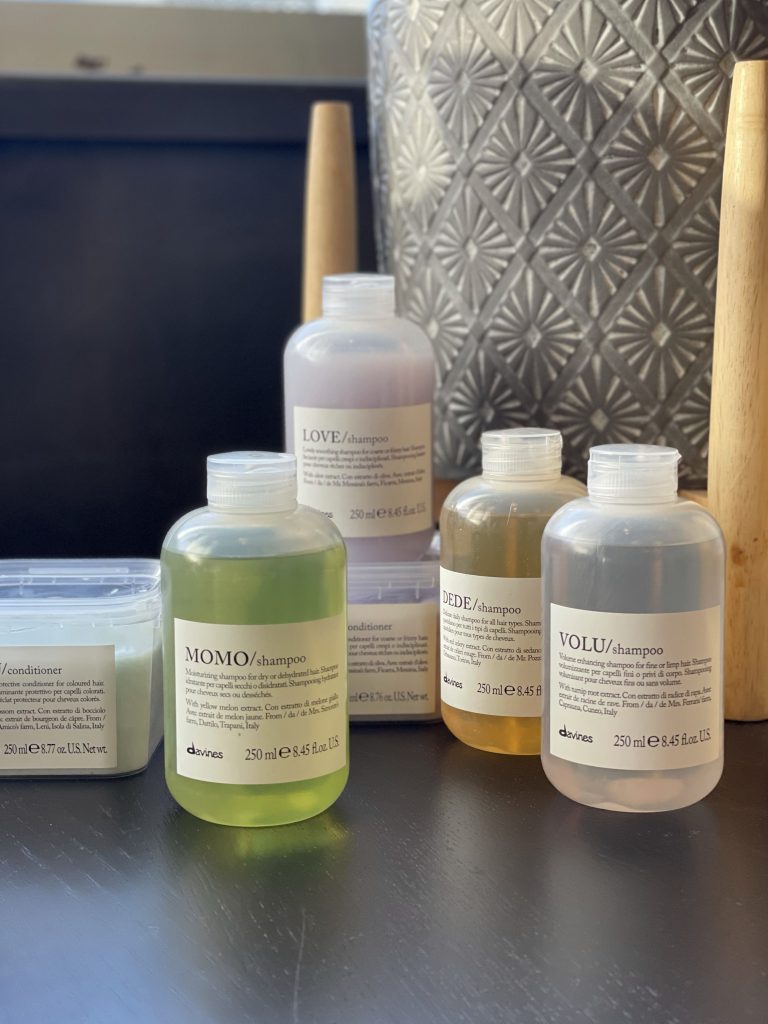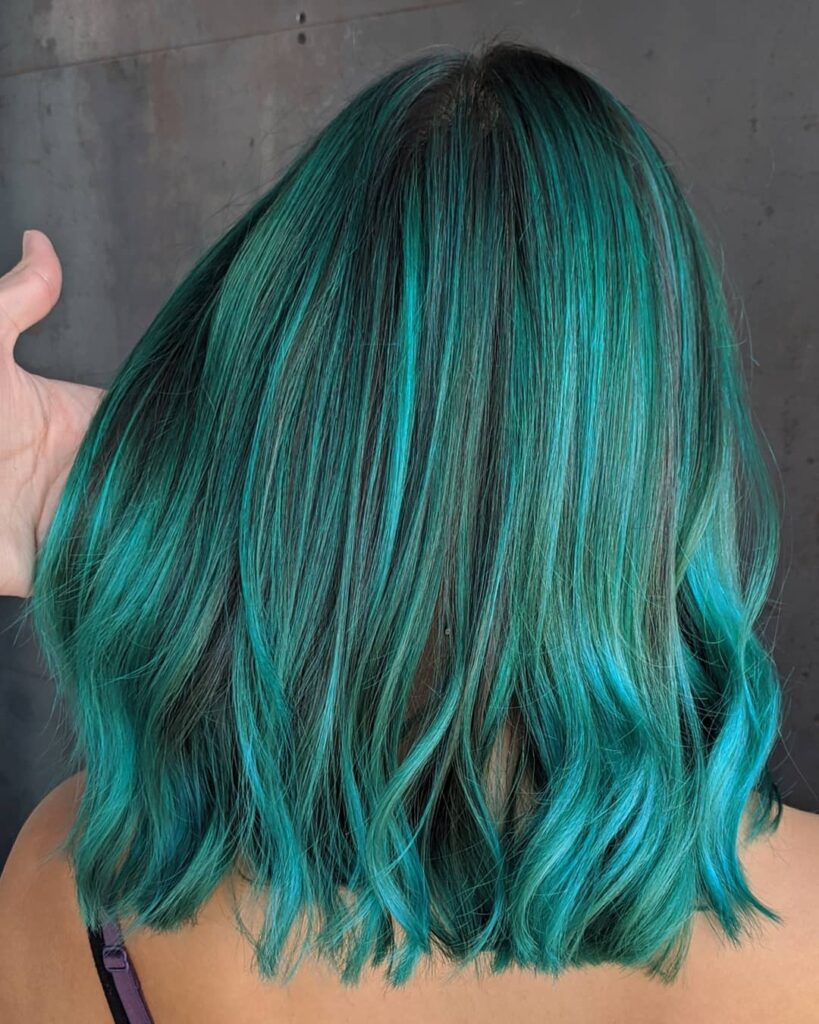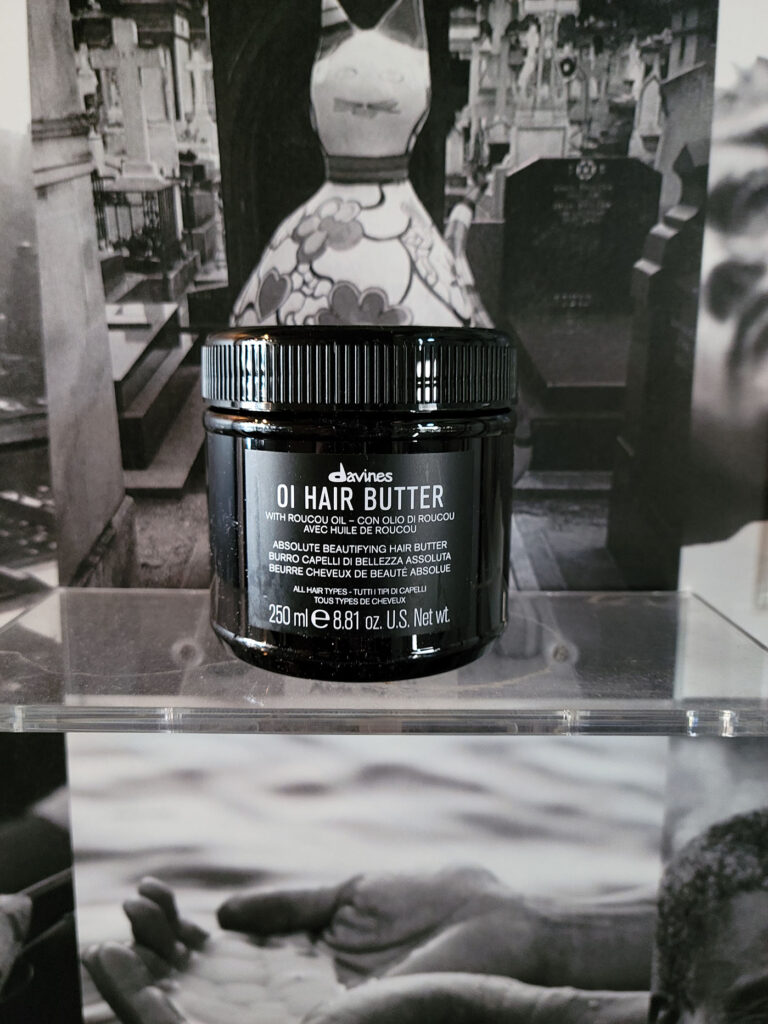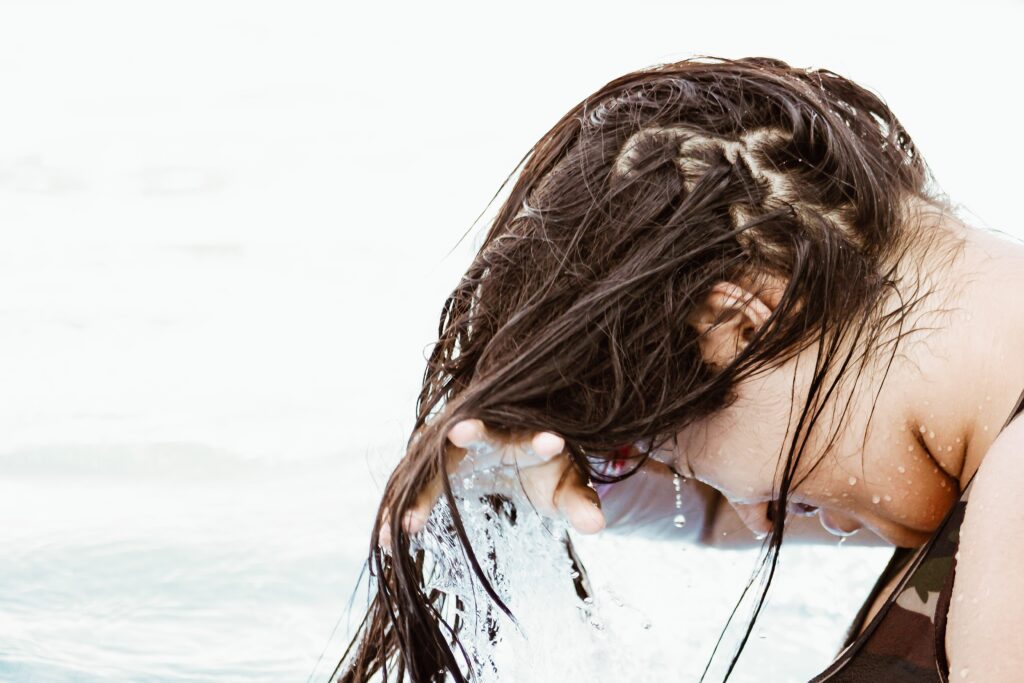FINDING A ROUTINE BEST SUITED FOR YOU
How often?
Stylists get asked this question often, and honestly there is not a universal answer. Your haircare routine is going to be as unique to you as your skincare routine. Keep reading and we will guide you to creating a shampoo routine best suited for you and your lifestyle.
Shampoo Quality
What are you using to shampoo your hair? The quality of shampoo you use is going to be most important. Many drug store shampoos tend to be harsh, heavy on the alcohol content and likely to strip your hair of natural protective oils. In addition to leaving the hair feeling rough and dry, some of these products can leave a waxy residue in your hair making it difficult to style.
Most salon grade shampoos are made with high quality ingredients designed to nourish the hair and gently cleanse. Using a shampoo made by a company such as Davines is gentle enough to shampoo every day without worrying about stripping the hair or drying it out. Anything we put on our skin, including our scalp, is being absorbed by our bodies. Quality matters!

Lifestyle
Exercise
If you work out regularly breaking a sweat, shampooing your hair after exercise is good for your hair. We secrete salt in our sweat that isn’t great to leave in the hair on a regular basis. You wouldn’t leave dry sweat on your face all day, would you? Leaving it on your scalp and in your hair is the same. Even a quick rinse is better than leaving sweat sitting in your hair.
Hot tools
If you use hot tools on your hair, you may want to work a scheduled routine so that you aren’t having to shampoo, blow out and hot iron your hair every single day. For example, you can get 3 days out of one shampoo:
- day 1: shampoo, allow to air dry, wear your hair up if you like.
- day 2: spritz your ends and use the blow dryer to quickly polish your look.
- day 3: use a dry shampoo such as Davines Invisible Dry Shampoo at your roots to absorb any excess oil while adding body. Use a hot iron on your ends for smoothness and shine.
Hair Texture
Texture plays a key role in how often you may need to shampoo your hair.
Straight hair tends to get oily faster than coarse or curly textured hair and usually needs to be shampooed at least every other day. A lightweight and gentle shampoo such as Davines Dede Shampoo would be a great choice.
Very curly and coarse hair tends to be on the drier side. Hair follicles of curly hair do not produce as much sebum (oil) as straight hair so these lucky folks can get away with shampooing every few weeks. Using a conditioning rinse or gentle cleanse such as Davines Love Curl Cleansing Cream between shampoos help keep the curls hydrated and bouncy.
Length
Hair length is another factor in how often you can or want to shampoo your hair. Shorter hair is easier to style so shampooing daily isn’t as labor intensive as a longer hair style that requires a blow dry session or hot iron.
Developing a routine to keep your hair and scalp healthy and save time is where you want to find your balance. Many people with longer hair choose not to shampoo very often, but it is possible to let it go too long.
Not shampooing often enough can potentially compromise scalp health. Maintaining a healthy scalp can help prevent hair loss, scalp fungus or other unsavory scalp conditions.
For longer hair, brushing the hair and scalp between shampoos is an excellent way to stimulate the circulation while distributing your natural oils through your mid length and ends. This is also a good way to prevent build up of dead cells, product, and too much oil at the roots.
Chemically Processed Hair
If you color your hair, get smoothing treatments or perms, then you need to use a special shampoo with low or no sulfites. Sulfites are what make shampoo lather, but they can strip the hair and make it feel rough. Your stylist should always prescribe the correct shampoo for the particular type of service you’ve received.
Vibrant fashion color will last longer by spacing out your shampoo days as much as possible (within reason of course). We highly recommend using a dry shampoo or hair refresher in between regular shampoo days and shampooing only your scalp once a week, or once every two weeks depending on your own texture and oil secretion.
Shampooing properly is key to maintaining the health and vibrancy of your hair. Keep reading and we will go over how.

How to Shampoo Your Hair
Here are a few tips that will help you get the most out of your shower/bath time and product investment.
Rinse Thoroughly
When you are about to shampoo your hair, be sure to rinse thoroughly first. Focus on getting your hair and scalp really wet, and allow the water to run through your hair while moving your fingers through from root to ends.
Shampoo Application
Next, use from a nickel to a quarter size amount of shampoo (depending on the length and thickness of your hair) in the palm of your hand. Gently rub your hands together distributing shampoo to your fingertips. Start from the back center of your scalp above your nape (if you have long hair, split your hair in the middle) and work your way up to the top of your head. You may need to wet your head again to get your shampoo to spread and emulsify.
Massage
Massage firmly with the pads of your finger tips in small circular motions. Don’t forget your temples and behind your ears. This stimulates the circulation on your scalp. Blood is what feeds our hair follicles, so massage not only feels great, it is healthy for your locks!
Focus on the Scalp
Focus on shampooing your scalp, then allow the suds to run down the length of your hair. There is no need to scrub the mid to end length of your hair. If you feel the need, shampoo a second time before squeezing the excess water out and then moving on to your conditioning treatment or mask.
Chemically Processed Hair
When applying a conditioner or mask to your hair, use a teaspoon or tablespoon amount. After a good towel dry, you will want to start from the bottom length of your hair and work your way up so that most of it is getting saturated into your ends. If you have a dry scalp, then rub a thin layer into your scalp. If you are in a humid climate or have very fine hair, then you might want to skip the moisture application to the scalp and focus on the ends so that your hair retains it’s body.
Most conditioners or masks need to be left on anywhere from 3 to 15 minutes depending on your schedule and needs. If your hair needs some extra love, occasionally leaving it in over night and then rinsing the next day doesn’t hurt.

Thank you for reading! If you have questions and would like an in person consultation with a stylist to help you design your own haircare routine, click below to book an appointment!


